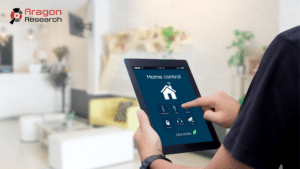
IoT Security: Safeguarding Your Smart Home and Devices
Our homes have become more convenient and efficient than ever before. Smart thermostats, security cameras, voice assistants, and even refrigerators have found their way into our daily lives, transforming our homes into digital ecosystems.
While the convenience and automation of these devices are undeniable, the security of our smart homes and the Internet of Things (IoT) devices they contain should be a top priority.
Understanding the IoT Landscape:
The Internet of Things (IoT) refers to the network of interconnected devices that communicate and share data over the internet. While IoT devices offer numerous benefits, they also come with their own unique security challenges. Here are some of the key considerations when it comes to IoT security:
- Proliferation of Devices: Smart homes can host a wide array of devices, from smart locks and lightbulbs to smart refrigerators and baby monitors. Each device is a potential entry point for cyberattacks.
- Limited Resources: Many IoT devices have limited computing power and memory, which can make it challenging to implement robust security features.
- Manufacturer Variability: Not all manufacturers prioritize security in the same way. Some may release devices with vulnerabilities that could be exploited by malicious actors.
The Importance of IoT Security:
IoT security is not just a matter of privacy; it’s also about protecting your home and your personal information. Here’s why it’s crucial:
- Data Privacy: IoT devices often collect and transmit data, such as your daily routines or even audio and video from cameras and microphones. Protecting this data is essential to safeguard your privacy.
- Physical Security: Some IoT devices, like smart locks and security systems, are directly linked to your home’s physical security. A breach could potentially lead to unauthorized access to your property.
- Network Security: Compromised IoT devices can be used as a gateway to your home network, potentially allowing cybercriminals to access other connected devices or even personal data.
Tips to Secure Your Smart Home:
- Change Default Passwords: Immediately change default passwords on all your IoT devices. These are often easy for hackers to guess.
- Regularly Update Firmware: Keep your devices up to date with the latest firmware and security patches. Manufacturers often release updates to address vulnerabilities.
- Network Segmentation: Isolate your IoT devices on a separate network from your critical devices like computers and smartphones. This limits the impact of a breach.
- Use Strong, Unique Passwords: Create strong, unique passwords for each device, and consider using a password manager to keep track of them.
- Implement Two-Factor Authentication (2FA): If available, enable 2FA for your IoT devices. This adds an extra layer of security.
- Check Manufacturer Reputation: Research manufacturers and opt for reputable brands known for their commitment to security.
- Regularly Audit Device Permissions: Review and restrict the permissions your devices have. Only grant necessary access.
- Monitor Network Traffic: Use network monitoring tools to keep an eye on the traffic coming from your IoT devices. Unusual patterns could indicate a security breach.
RELATED ARTICLE: The Top Interoperability Challenges of Home IoT
Bottom Line
The convenience and automation that IoT devices bring to our homes are undeniable. However, safeguarding your smart home and devices is crucial to protect your privacy, physical security, and network integrity. These IoT security best practices may help you can enjoy the benefits of a smart home while minimizing the risks associated with interconnected devices.
The Future of Communications and Collaboration
The second largest market in enterprise software is Communications and Collaboration. With a growing focus on AI and on enabling users to do video, voice or messaging based interactions, Communications and Collaboration is poised for the most change as Video becomes pervasive and messaging takes over from email.
Join Aragon Research’s Founder and CEO, Jim Lundy, on Thursday, November 16th, 2023 as he talks about what the future of UC&C looks like.
Key issues being covered include:
- What are the trends driving the evolution of Communications and Collaboration?
- How will AI and CoPilots make communication and collaboration more efficient?
- How can enterprises stay ahead of and take advantage of all of the innovation that is coming from Providers?